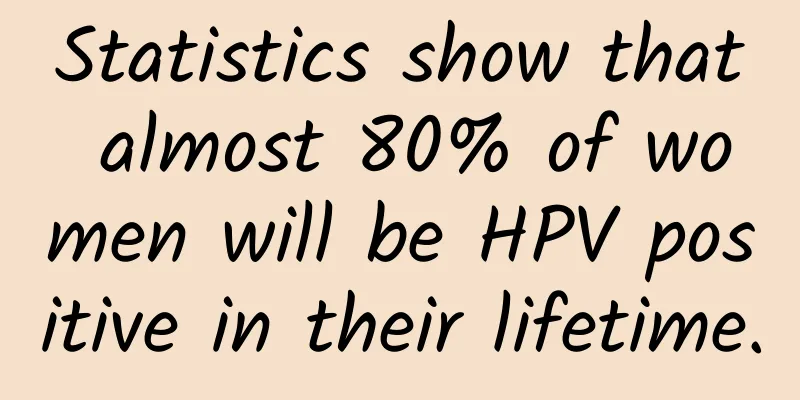Statistics show that almost 80% of women will be HPV positive in their lifetime.

|
Cervical cancer is one of the three most common malignant tumors, with approximately 100,000 new cases and 30,000 deaths each year. How much do you know about cervical cancer? Cervical cancer, also known as cervical cancer, is a malignant tumor that occurs in the female cervix. According to statistics from the World Health Organization, one woman is diagnosed with cervical cancer every minute and one woman dies from cervical cancer every two minutes. When it comes to cervical cancer, the first thing to talk about is the HPV virus. When the HPV virus enters the human body, its only definite target is the basal cells of the human mucosa or skin. After infiltrating the basal cells, HPV begins to replicate crazily. Studies have found that 99.7% of cervical cancer is related to long-term or repeated high-risk human papillomavirus (HPV) infection. The words “long-term” and “repeatedly” need to be emphasized here! There are more than 200 subtypes of HPV virus known so far, and the HPV family is huge. But only a few of them are relatively fierce, and the human immune system is not a vegetarian, and most of them will be killed. Almost 80% of women will be HPV positive in their lifetime. However, 90% of HPV viruses will be cleared by the body's own immune system within two years, and the vast majority will naturally turn negative within 1-2 years. It takes several years or even more than ten years for a positive test to develop into cancer. It can be said that the probability of developing cervical cancer among all positive people is almost as low as the probability of winning the lottery. It is probably because HPV carries with it the "cervical cancer halo" every time it appears, which leads many people to mistakenly believe that HPV infection will cause cervical cancer. HPV virus is very good at "taking advantage of loopholes" and has many ways of transmission, among which sexual intercourse is the most common. People who have sexual intercourse at an early age, whose sexual partners are HPV carriers, or who have multiple sexual partners are more likely to be infected. But this does not mean that HPV infection is a sexually transmitted disease, because contact with contaminated objects is also one of the ways of transmission. In addition, HPV virus can also be transmitted from mother to child. Having said all this, men are probably relieved. Cervical cancer is "exclusively" for women. "What does HPV infection have to do with me?" Don't worry, men are also at risk of contracting the HPV virus! In addition to inducing cervical cancer, HPV virus is also the culprit of many diseases such as genital warts, anal cancer, vaginal cancer, and penile cancer. HPV infection in men not only endangers their own reproductive health and causes sexually transmitted diseases, infertility or cancer, but also easily transmits the virus to women, increasing the risk of disease for their partners. Therefore, if women get cervical cancer, it may still be the men's fault. Although the human body's immune system is strong and there is no need to worry too much about cervical cancer, as a killer of women, cervical cancer always threatens the lives of many women. Fortunately, after long-term efforts by scientists around the world, people finally developed a vaccine to prevent cervical cancer in 2006, which are the bivalent, quadrivalent and nonavalent vaccines that we often hear about. The "valent" refers to the types of HPV subtypes that the vaccine can prevent. Among them, the two-valent vaccine only prevents high-risk types 16 and 18, the four-valent vaccine adds low-risk types 6 and 11, and the nine-valent vaccine adds types 31, 33, 45, 52 and 58 that are more susceptible to infection in Asians. Therefore, it is more recommended that Chinese women receive the nine-valent vaccine, but the vaccination age should be 16 to 26 years old. The bivalent vaccine is divided into domestic and imported ones. The vaccination age is 9 to 45 years old and it is the most widely used. The quadrivalent vaccine can be administered at an age of 20 to 45 years old. It is worth noting that this vaccine can only prevent infection and has no therapeutic effect. Even if you have been vaccinated, you should still undergo regular cervical cancer screening. As the only malignant tumor that humans can clearly identify the cause of and can detect and prevent early, cervical cancer is likely to be the first cancer to be eliminated by humans. There is nothing to be proud of! Produced by: Dongdongmiao Science WeChat ID: dongdongmeow Video account: Dongdongmiao; Weibo: @Dongdongmiao Science Popularization Source: Dongdongmiao Science |
>>: What materials is the Great Wall made of? How many provinces does the Great Wall span?
Recommend
What factors cause irregular menstruation in middle-aged women?
Menstrual abnormalities in women are an issue we ...
What is the car carbon canister used for? Is the car carbon canister special or universal?
The carbon canister is a canister filled with act...
What are the items in the prenatal checkup during the fifth month of pregnancy?
Women who are 5 months pregnant must have regular...
Regulate vaginal flora
It can be said that bacteria are an unavoidable t...
Will eating too much iodized salt cause thyroid cancer?
Iodine is an essential micronutrient for metaboli...
Hypopituitarism in women
If some patients have low pituitary function, it ...
Parents should not ignore the baby’s little movements!
Tourette syndrome, also known as Tourette syndrom...
Why do girls often have stomachaches?
Girls should be familiar with the feeling of stom...
What medicine is used for female urinary retention
Urinary retention in women is mainly caused by ur...
Where has the coronavirus gone? Will it disappear? Experts respond
Recently, the question of "where has the new...
Formula for determining the gender of the gestational sac
Many people want to know as soon as possible whet...
Will girls have kidney deficiency?
In recent years, kidney deficiency is no longer a...
What are the causes of female sleepiness?
With the development of society, we can see that ...
How to tie a ponytail
How to tie a ponytail Ponytail is a common hairst...









